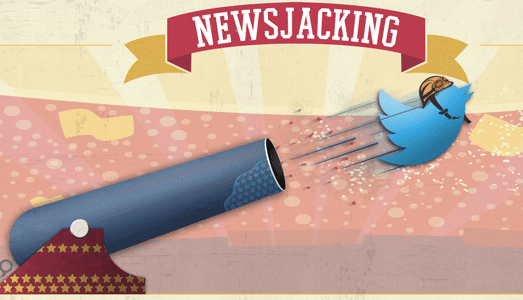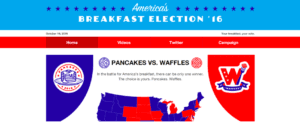Newsjacking has become an increasingly popular but risky marketing and PR tactic. The term “newsjacking,” made popular by David Meerman Scott, refers to marketers capitalizing on news and topical issues to build awareness for their brands. Many companies have done so (in real time or near real time) to create an impact for their brand, a notable example being Nike’s 2017 Equality ad that promotes equality both on and off the field of play.
It’s tempting for businesses to attempt newsjacking when they see the kind of visibility that can come from deploying the tactic. But brands need to proceed with caution. Businesses have incurred backlash when newsjacking sensitive topics such as celebrity deaths, and newsjacking can come across as too opportunistic.
But just because newsjacking is risky, it doesn’t mean you should ignore this tactic. Newsjacking can deliver tremendous value if you do it right. Here are some tips to keep in mind as you consider newsjacking:
Know What Topics Your Brand Is Comfortable Covering
We all have a different understanding of what can be controversial. Brands have suffered when they try to appeal to an audience whose sensibilities and values don’t correlate with a brand’s perception of current events. It is important to discuss with your team exactly what topics should be covered and what areas you would like to shy away from. This necessity became increasingly important with the 2016 Presidential election. Certain brands openly discussed their political stance. Others tapped into the news generated by the election without explicitly taking a side. A great example of the latter: Bisquick with its “Make America Pancakes Again.” The brand capitalized on a campaign slogan without suggesting any specific political ties.
Of course, politics is a divisive topic and can really strike at a consumer’s emotions. It is imperative to measure the risks and rewards of commenting directly on political issues. The safer bet is to appeal towards pop culture and the current zeitgeist, which can be easily cultivated by monitoring Google Trends and trending hashtags on social media. Finding topics that appeal to your brand values and your audience’s values can help you to tailor your messaging and reap the benefits.
Have a Purpose and a Story
If you are going to newsjack, do so with a purpose with a definable goal, such as increasing brand lift. And make sure you develop a compellingly creative story to tell. If you are unable to come up with something creative or you are unable to provide strong content for the news, it is best to sit out the story.
Audi’s May 2015 “Birth” ad is an example of newsjacking with a purpose and a story. The company’s ad played into the birth of the Royal baby, but also promoted its own new baby, the Audi RS3, which was birthed from a larger Audi model. The company advertised the new RS3 with a strong marketing campaign that was relevant to current events.
Plan Content When Possible
It is not uncommon for newsjacking to be created on the spot, but you can also plan ahead with events, such as major award shows and sporting events whose dates are known months in advance. Coca-Cola capitalized on the popularity of the 2016 Summer Olympics with a campaign that celebrated individual athletes with advertising and social media posts such as this one:
When creating your social media calendar, think of what events are coming up and consider the power of visual storytelling to tap into the appeal of those events.
Do Your Research
Although it is good to be the first to jump on a news story, make sure you have your facts straight before posting content related to breaking news, and make sure your ad reflects cultural truth. Especially when newsjacking a story in real time, carefully vet your research on a topic to ensure that you are not providing inaccurate details to your audience. And research the credibility of the story you want to tell. A brand’s credibility can easily be affected by sharing content (whether an ad or a tweet) that is inaccurate, false, or out of step with the cultural zeitgeist.
A recent example of being out of step can be found in the now infamous Pepsi ad featuring Kendall Jenner. The ad was an attempt to reach the millennial audience by appealing to the culture of activism and goals of unity, but missed the mark according to many critics by diminishing the importance of all the work that activists are doing. Perhaps had Pepsi done more research ahead of the ad, the company would have uncovered how serious, personal, and passionate protests are as a social statement. The company might have then avoided creating an ad that associated a can of Pepsi with social change agendas and thus came across as trivializing social protest as a form of self-expression.
Avoid Anything Related to Death or Disaster
It is best to steer clear of negative events when newsjacking even if a company is attempting to express sympathy. Companies that use disasters or fatalities to boost their brand appearance create an unfortunate association with their brand. Additionally, commenting on topics like celebrity deaths can be equally as problematic. Just to be clear: if your brand is donating to a cause or shedding light on an issue without attempting to promote sales, you are probably not creating a newsjack (but you should be very careful about the tone of your message anyway). But when newsjacking, be cognizant of what you are implying with your post.
Newsjacking can be a positive tool and promote your brand while allowing you to comment on cultural issues. To begin working newsjacking into your own marketing calendar, start to look ahead at what major events will be occurring. For instance, with the NBA and NHL playoffs in full swing and with the Major League Baseball season under way, a sport-related newsjack may be highly relevant to your audience. Or consider an entertainment event such as the Tony Awards in June. A keen eye for events and a willingness to follow the tips outlined in this post will help you get started with newsjacking. Contact True Interactive. We can help you.
Lead image source: Prateek Malian


